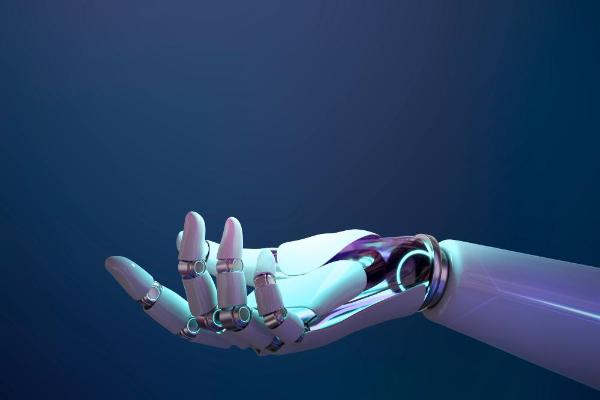AI-Powered MVP Development in 2024
With the introduction of artificial intelligence (AI) into the Minimum Viable Product (MVP) development process, the field of product development is undergoing a radical change. AI-driven MVP development automates processes, offers deeper user insights, facilitates user-centric prototypes, and revolutionizes how businesses realize their creative ideas. This essay explores the field of AI-powered MVP Development in 2024, going over the essentials of AI-driven prototypes, the frameworks and tools that facilitate it, and the cutting-edge AI developments that are changing the game.
AI-Driven MVP Development: From Theory to Implementation
MVPs have historically served as a quick and affordable tool to assess market interest while serving as a testing ground for new concepts. Artificial Intelligence (AI) now adds potent intelligence to this process.
Beyond automation, AI's contribution to MVP creation lies in integrating cognitive capabilities into the design of your prototype. Imagine an MVP that changes, learns, and adapts in response to user interactions. This isn't simply a theoretical idea in 2024; it's a valuable method for creating MVPs that cater to users' shifting wants.
AI isn't just a pattern-follower; it recognizes patterns, predicts user preferences, and adjusts the MVP experience appropriately.
Organizations that use AI in the MVP development process can:
- Accelerate the prototyping process. AI speeds up the development and testing of new features by automating many prototype chores.
- Learn more about your users. AI can analyze enormous volumes of data to find hidden patterns and trends, giving it a thorough understanding of user preferences and behavior.
- Improve resource allocation. Organizations can concentrate their resources on areas that will yield the greatest return on investment by using AI to identify the most significant characteristics and user segments.
- Reduce the risk of product failure. Early problem detection with AI-powered insights can lower the risk of a failed product and expensive rework.
AI-Powered Prototyping Tools
We require the appropriate frameworks and tools to put the theory of AI-driven MVP development into practice. By 2024, AI-driven products will be abundant on the market and revolutionize prototyping. Among the most noteworthy instruments are:
- Google AI Platform
- Amazon SageMaker
- Microsoft Azure ML Studio
- IBM Watson Studio
These frameworks and tools offer a variety of functionalities to facilitate the creation of AI-powered MVPs, ranging from gathering and preparing data to training and deploying models.
AI in Enhancing User-Centric Prototypes
Deeply user-centric prototypes that customize the product experience to each user's wants and preferences are the foundation of AI-powered MVP development. Through two critical components—personalization and user behavior analysis and prediction—AI plays a crucial role in attaining this user-centricity.
User Behavior Analysis and Prediction
Artificial intelligence (AI) systems can examine enormous volumes of user data, including clickstream data, user interactions, and feedback surveys, to identify patterns and trends in user behavior. With a thorough grasp of user preferences and pain spots, firms can:
- Determine the usability problems. AI makes it possible to quickly and effectively improve user interface design by identifying areas of friction or uncertainty.
- Prioritize feature development. In order to prioritize the creation of new features, AI can evaluate usage data to determine which parts are most valued by consumers.
- Predict user churn. AI algorithms are able to identify which users are most likely to leave, which enables proactive measures to keep essential clients.
Organizations may develop prototypes that are user-friendly, captivating, and sensitive to their needs by studying user behavior.
Personalization and AI-Driven User Experiences
The new standard is personalization, and AI is what powers the development of customized user experiences in MVPs. AI makes sure that each user feels as though the MVP was created especially for them, whether it's via making feature recommendations based on past usage or dynamically tailoring the UI to personal preferences.
Personalized products are becoming the norm rather than a luxury as the days of one-size-fits-all MVPs are coming to an end.
Innovative AI Trends Transforming MVP Development
In 2024, the tech world will be a dynamic canvas where new AI trends will reinvent MVP development methods.
Voice-Enabled Prototypes
Smart speakers are not the only devices that use voice technology. AI opens up new opportunities for intuitive and hands-free user experiences by introducing voice interactions into MVPs. Imagine using voice commands to navigate an MVP, provide orders, and receive responses.
Emotion Recognition
One subtlety that AI highlights is the understanding of user emotions. AI can determine users' sentiments by examining their voice tones or facial expressions. MVPs can adjust by responding to users' emotions as well as their behaviors, thanks to their emotional intelligence.
AI-Powered Collaboration
AI is a collaborator in development teams, not just for end users. Artificial Intelligence (AI) is a helpful team member that can automate project management activities and provide intelligent design enhancements, thereby improving the creative process.
Conclusion
AI-powered MVP creation is a revolution in product development, not just a fad. Organizations may minimize the risk of product failure, improve resource allocation, obtain deeper consumer insights, and speed up prototyping by utilizing AI. Artificial intelligence (AI) is revolutionizing the way we design products, opening the door to a time when prototypes are not only helpful but also intelligent, user-focused, and flexible.

